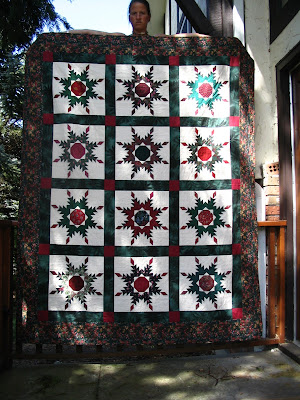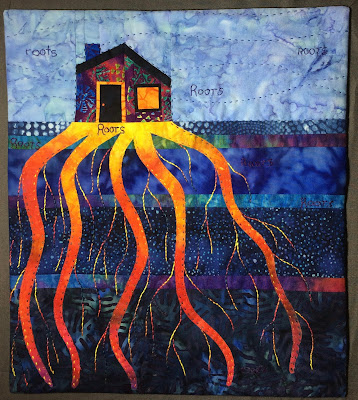I've been thinking lately about quilting retreats, and especially about the three night, four day retreat a group of us have at Honeymoon Bay every March. Before Honeymoon Bay it was at Tamagawa and before that is was at Montfort House. It's been a tradition for more than twenty years now, and although the configuration of people has changed over the years, it remains one of my favourite times. Each of us carts in enormous amounts of fabric and thread, and all the sewing machines and equipment we need to work on whatever project (or two or three) that we've brought with us. It's almost always more than we need, and some of us need help these days getting it from our vehicles to the classroom workspace, but then we begin.
There's finishing of old projects and beginning of new projects. (Joyanne)There's machine sewing and hand-sewing and felting and painting. (June)
We share ideas and knowledge about techniques and stories of where we've been and what we've done over the past year, but there's lots of time for more light-hearted conversation and laughter too. (Margaret)
Some people work on more traditional designs while others are venturing more into art quilting. (Elizabeth)
Informal sharing of information is terrific. We don't have workshops as such, but we learn so much. (Gayle, Eileen)
We hear about new equipment that will help us in our creative pursuits, and watch in fascination as others in the group move in new and exciting directions. (Anne)
Sometimes "works in progress" from some years back are brought out and completed. (Esther)
Sometimes astonishing new work is revealed. (Judy)
There's always a challenge to participate in and at least two evenings when we share our work. And throughout the day there are delicious meals served to us by the staff. And then at the end of the day there's a hot tub to soak in before falling into the comfiest of beds. I feel so, so fortunate to have each and every one of these women in my life - women who share the same passion for the making of things - and who choose to spend time together every year. And it just seemed the right thing to write about this week.

















































